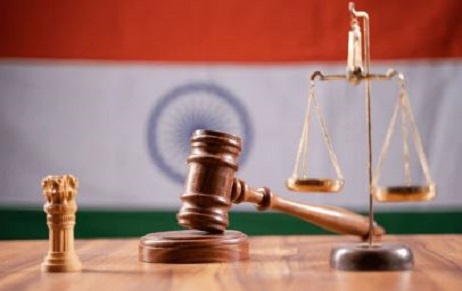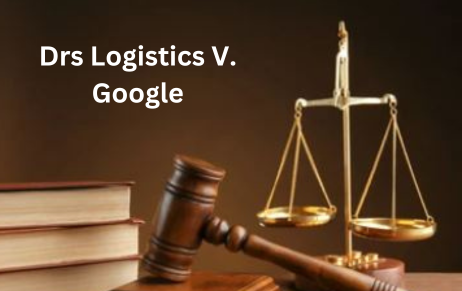ABSTRACT The project employs doctrinal research methods, i.e. secondary research which involves writing on basis…
Case Summary of A Recent Decision of U.S. Court of Appeals for The Federal Circuit In The Case, “Core Wireless Licensing vs. LG Electronics”
This article summarises a recent judgment of United States Court of Appeals for the Federal Circuit dated 25th January 2018 in the case “Core Wireless Licensing S.A.R.L. v. LG Electronics, Inc., LG Electronics Mobile comm U.S.A., Inc.”
Brief Insight into the Dispute:
The patents 8,713,476 (hereinafter referred to as “‘476”) and 8,434,020 (hereinafter referred to as “‘020”) owned by Core Wireless Licensing form the subject matter of this dispute. The dispute revolves around the claim of Core Wireless Licensing that these patents were infringed by LG and LG’s defence that both the patents direct to an ineligible subject matter (a mere abstract idea) under 35 U.S.C. § 101 hence, not patentable and there is no infringement.
Subject Matter of the Dispute:
The patents ‘476 and ‘020 of Core Wireless Licensing which were allegedly infringed by LG form the subject matter of the dispute. The patents revealed and claimed “improved display interfaces, particularly for electronic devices with small screens like mobile telephones. The improved interfaces allow a user to more quickly access desired data stored in, and functions of applications included in, the electronic devices.”
The ’476 and ’020 patent specifications are effectively identical and the functionality proposed by both the patents can be stated as “A computing device comprising a display screen, the computing device being configured to display on the screen a menu listing one or more applications, and additionally being configured to display on the screen an application summary that can be reached directly from the menu, wherein the application summary displays a limited list of data offered within the one or more applications, each of the data in the list being selectable to launch the respective application and enable the selected data to be seen within the respective application, and wherein the application summary is displayed while the one or more applications are in an un-launched state.”
Flow of Proceedings:
To avoid the trial, LG filed a motion for summary judgment for invalidity of the claims under 35 U.S.C. § 101, which was denied by the court. For the purposes of evaluating patent eligibility, the district court found claim of ’476 patent to be the representative of both the patents. It held that the claims are not directed to an abstract idea because, the concepts of “application,” “summary window,” and “un-launched state” which form the core of the claim are specific to devices like computers and cell phones. It further noted, even “if claims were directed to an abstract idea, it would still be patent eligible at least because it passes the machine-or-transformation test.”
The case proceeded for trial after denial of summary judgement. The district court found that a conundrum existed as to how the words “reached directly” and “un-launched state”, as mentioned in the claims of the disputed Patents,are mapped to the actual functionality. Hence, the court offered an opportunity to both the parties to argue constructions of these terms.
LG requested for a judgement as a matter of law claiming the defence that the plaintiff had insufficient evidence to support the case and to prove infringement. They argued that the correct construction of “un-launched state” means “not running” and that the “reached directly” limitation required user interaction with the main menu, and no reasonable jury could have found infringement under such constructions.
After hearing the explanation provided by experts of both the parties, the district court ruled that “un-launched state” signifies “not displayed” and “reached directly” signifies “reached without an intervening step.” The district court declined to revisit claim construction stating that noting LG did not preserve its claim construction arguments in the original motion itself.
LG again requested for judgment as a matter of law. This time the defence taken was of anticipation, which questioned the novelty of the patents. The district court denied LG’s this motion and concluded “LG failed to overcome the presumption of validity accorded to the ’476 and ’020 Patents by clear and convincing evidence.”
In the Court of Appeals for the Federal Circuit, the district court’s decision was affirmed providing the following explanation.
Decision of the Court:
Three factual questions regarding the patentability of the claims in dispute, question of anticipation and whether there was an infringement or not, were answered by the Court of Appeals for the Federal Circuit.
The court noted, “The asserted claims in this case are directed to an improved user interface for computing devices, not to the abstract idea of an index, as argued by LG on appeal. Although the generic idea of summarizing information certainly existed prior to the invention, these claims are directed to a particular manner of summarizing and presenting information in electronic devices. The Claim of the ’476 patent requires “an application summary that can be reached directly from the menu,” specifying a particular manner by which the summary window must be accessed. The claim further requires the application summary window list a limited set of data, “each of the data in the list being selectable to launch the respective application and enable the selected data to be seen within the respective application.” This claim limitation restrains the type of data that can be displayed in the summary window. Finally, the claim recites that the summary window “is displayed while the one or more applications are in an un-launched state,” a requirement that the device applications exist in a particular state. These limitations disclose a specific manner of displaying a limited set of information to the user, rather than using conventional user interface methods to display a generic index on a computer. The claims recite a specific improvement over prior systems, resulting in an improved user interface for electronic devices.” This answered the question of patentability under 35 U.S.C. § 101 and affirmed that the claims are not directed to an abstract idea and there is no need to proceed to the second step of the inquiry.
It was observed by the courts of appeals that the claimed invention provided flexibility that prior art processors did not possess, and removed the need to design a separate memory system for each type of processor. This answers the question of anticipation.
Now parties’ dispute boiled down to whether the status bar is part of the accused “home screen.” This is a fact question that the jury resolved in favour of Core Wireless, and substantial evidence supports the jury’s finding. In the LG user manual, the status bar is the first section of the view identified as the home screen which answers the question of infringement.
Thus, United States Court of Appeals for the Federal Circuit upheld the district court’s denial of summary judgment that the claims are ineligible under 35 U.S.C. § 101. It also affirmed the district court’s denial of judgment as a matter of law that the claims are anticipated by Blanchard and the claims are not infringed.
Author: Mr. Akash Kiran More, Intern at Khurana & Khurana, Advocates and IP Attorneys. In case of any queries please contact/write back to us at swapnils@khuranaandkhurana.com.



